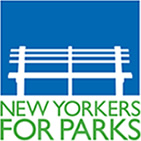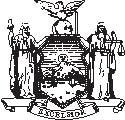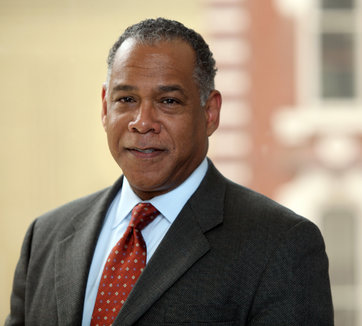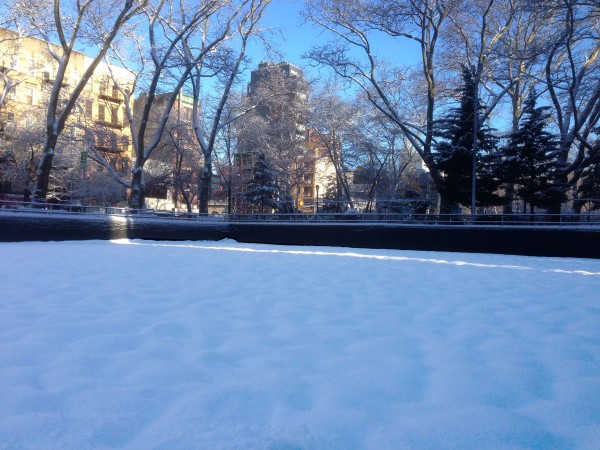Senator Squadron’s testimony before NYC Council Committee on Parks and Recreation: Equity in Parks
Click image or link below to open PDF of Senator Squadron’s testimony.
Click image or link below to open PDF of Senator Squadron’s testimony.
This post comes from the New Yorkers for Parks blog.

On March 27, the City Council’s Parks Committee held its annual preliminary budget hearing, and NY4P Executive Director Tupper Thomas was there to offer both testimony about specific budgetary needs this fiscal year, but also to begin to address some of the more overreaching equity issues facing the park system.
The hearing arrived on the heels of Mayor de Blasio’s introduction of Mitchell Silver as New York City’s next Parks Commissioner. The announcement, held in Seward Park, on Manhattan’s Lower East Side, was an inspiring day for park advocates across the city. Both the mayor and incoming commissioner offered thoughtful, even-handed commentary centered on a clear goal: a fairer park system for all New Yorkers.
We are pleased to see that the mayor’s preliminary budget for Parks not only baselines many of the important restorations made over the past few years, such as street-tree care and stump removal, but funds items up front that are usually subject to the annual budget dance, such as Playground Associates and seasonal workers.
This good news gives us the opportunity to turn our attention to the larger issue of addressing inequities across the park system. The solution is complex and nuanced. While many of the large park conservancies are ready to work with the commissioner on bringing more private resources – financial and otherwise – to parks in need, it’s clear, as Parks Committee Chairman Mark Levine noted recently in the Huffington Post, that addressing inequities must begin with the public budget. There are several specific budget and policy reforms that the administration and Parks Department can undertake in the name of equity and fairness.
On the expense side, this will require addressing the top concern of many local park advocates across the city: there simply isn’t enough full-time staff assigned to the parks that need them most. Rather, 75 percent of the Department’s maintenance staff is made up of Job Training Participants who work at the Department up to six months but are almost never given an opportunity for permanent employment once their training is complete. “Almost as soon as they’re really up to speed on the park, they cycle out,” a local advocate told us recently. Her comment rings true across the city. At the same time, many advocates tell us that having full-time staff – a familiar face in the park – goes a long way toward improving the overall park experience for users. These issues offer Mayor de Blasio and Commissioner Silver an opportunity to both address park equity issues and create good jobs.
What would those jobs be, where would they make the most immediate impact, and how much money is needed to create them? Here are some great ways to get started in the highest-use, highest-need neighborhood parks:
· $2 million for 50 full-time workers to staff playgrounds with comfort stations.
· $1.5 million for 25 skilled full-time gardeners to help maintain midsized neighborhood parks. Our organization learned first-hand how important these positions are when we helped lead the Neighborhood Parks Initiative almost 10 years ago.
Not only would these new positions start making a difference for parks most in need right away, but they’d offer an opportunity for the Department’s part-time workers to gain full-time employment through a new, robust training program to help transition JTP staff into full-time maintenance workers and gardeners.
· Additionally, though the Parks Department has shortened its street-tree pruning cycle thanks to recent budget restorations, DPR still prunes very few trees park trees. $2 million would allow the Department to at least prune about 25,000 trees in parks: a good start toward a pruning cycle.
These are possible suggestions for a better operating budget. If the Council could establish a neighborhood parks fund of $5-6 million, Commissioner Silver could work with the Council on a plan that really addresses needs in underserved parks.
There is also an opportunity to address inequities through the capital budget. In recent years, the Parks Department has not had a meaningful discretionary budget to really enable it to plan for and fund capital projects over time across parks citywide. Rather, the DPR has been reliant for funding for the majority of its projects on piecemeal discretionary allocations from City Council Members and Borough Presidents. Cobbling together allocations over multiple fiscal years from different elected officials is inefficient, leads to inequitable results, and often means the nuts-and-bolts needs of parks across the city fall through the cracks.
We are pleased to see that our call for increased discretionary capital funding, as highlighted in our Parks Platform 2013 and elsewhere, seems to have been heard: the FY 15 budget contains a significant amount of capital funding, and it appears to be at the discretion of Commissioner Silver. We call on the Council and administration to ensure that this funding remains in the budget.
The introduction of Mitchell Silver as Parks Commissioner ushered in a new era for New York City’s parks. We’re eager to work with Commissioner Silver and the leading conservancies on ways to bring more private money into high-need parks throughout the city, but we’re also hopeful that the Parks Department will now turn its primary focus to large-scale budget and policy reforms aimed at addressing inequity – and, in turn, lifting the park system as a whole.

Sara Roosevelt Park Community Coalition
https://sdrpc.mkgarden.org/
Good afternoon. My name is K Webster, President of the Sara Roosevelt Park Community Coalition.
The Parks Department has been our active partner in caring for this essential open space in our crowded and diverse neighborhoods. We appreciate Partnership for Parks for their ongoing support of this alliance. They provide steady guidance for the Coalition’s stewardship in this park.
Parks need the community working in them: deciding, gardening, and creating in collaboration with the Parks Department. Not outside the fence waiting to be “served”. We want a dynamic, ongoing relationship where we come to the table with common goals, disagreements, and with each group’s unique expertise. We get smarter together.
Our parks and open spaces are the country homes, science labs, nature preserves, places of play, respite and community gathering for most city dwellers. They keep life more alive here.
Therefore our parks need dedicated, assured funding commensurate with these vital roles and funding for an expanded role we think they need to play going forward.
We need a living wage for our underpaid WEP workers. We can’t maintain our parks on the backs of poor people.
But, urgently, climate mitigation, resiliency and recovery must now be part of the core mission of Parks.
We need innovative and decisive actions to meet the challenges of climate change and the present lack of adequate financial resources. We need to build a cadre of skilled and savvy citizen stewards and Park’s workers to meet both those challenges.
Every park can become a model of sustainable practices: from solar lighting to recycling. They can be beacons of information about bird and bee habitat, indigenous plantings, and water reclamation. Our parks buildings can provide sites of learning on climate resiliency, sites of recovery, solar-powered charging stations, bike repair shops and think-tanks for technologies that show a way forward. We can educate our city on their stake in their own environment.
Our city also has a global reach. We can join efforts in earnest to shift the balance on climate disruption. Military leaders, 97% of scientists, along with us tree huggers all agree: we are at a tipping point.
This will be challenging and we can do it. And there really isn’t any other choice.
Thank you for your time.
K Webster
President
Sara Roosevelt Park Coalition

Testimony of State Senator Daniel Squadron to New York City Council Committee on Parks and Recreation on the Fiscal 2015 Preliminary Budget
March 27, 2014
My name is Daniel Squadron and I represent the 26th District in the New York State Senate. My district includes the Manhattan neighborhoods of Tribeca, Battery Park City, the Lower East Side, Chinatown, the Financial District, Little Italy, SoHo and the East Village and the Brooklyn neighborhoods of Greenpoint, Williamsburg, Vinegar Hill, DUMBO, Fulton Ferry, Brooklyn Heights, Cobble Hill, Carroll Gardens and Gowanus. Thank you for the opportunity to testify at this hearing on parks funding.
Let me begin by saying that the conversation today is incomplete. It focuses on only one piece of the overall spending on our City’s parks. This budget does not include the allocation of the millions of dollars that third party parks advocates and conservancies will raise and spend in parks around the City this year. Nor does it include the individual allotments and grants that community members lobby elected officials to spend from their so-called discretionary funds.
Introduction 154, sponsored by Council Members Lander and Levine, would bring increased openness and transparency to parks funding by requiring the Parks Commissioner to identify each source of funding for parks maintenance and capital projects, among other things.
Today’s patchwork model for funding our city’s parks, which are as vital to our civic infrastructure as oxygen is to our lungs, is wholly and completely inadequate for three reasons: underfunding by the City; lack of a dedicated capital budget; and the unintended consequences of conservancies.
For New Yorkers who are fortunate enough to live near one of our marquee parks, it’s probably not obvious that the Parks budget is inadequate. Those parks are doing better than ever, and it would be easy to believe that the Parks budget has increased based on those parks alone. But a visit to St. Mary’s Park in Mott Haven, or Flushing Meadows Park, or Sara Roosevelt Park in my district exposes the vast divide in Parks upkeep around our city.
In 1986, the Parks Department represented .86 percent of the city’s overall spending. During the 2001 election season, parks advocates organized a major campaign to push for one percent of the city’s budget to be dedicated to parks. We never got there and the campaign dissipated. Today, the Parks Department receives a paltry .52 percent of the city’s $73.7 billion budget. That percentage has been stagnant for years.
The fact is that because our marquee parks are doing so well, the momentum for doing something about the lack of funding for other parks around the city dried up. Fourteen years ago there was greater outcry about a Parks budget that is identical as a fraction of the city’s budget to what it is today. The biggest difference between then and now is the increase in dollars that generous conservancies spend to maintain and improve a small number of fortunate parks in affluent neighborhoods.
Until every park, playground, and plaza in the five boroughs is maintained to a state of good repair, this budget will continue to be inadequate.
The fact that the Parks Department has no discretionary capital budget of its own is a gaping hole in the funding structure. Without a capital program, Parks is left to grovel for member items and philanthropic donations to meet what should be considered basic needs. Instead of a system-wide evaluation, individual elected officials and philanthropists are left to make disconnected decisions about their neighborhood or their parks. New Yorkers for Parks has said the lack of capital budget creates inefficiencies, and I could not agree more.
In order to create more equitable funding within parks and change the current budget dynamic, I have put forward a proposal to create a Neighborhood Parks Alliance that would form partnerships between well-financed conservancies and parks that are most in need. A contributing park would commit a portion of its conservancy’s budget to a member park, defined as City parks rated as unacceptable in the prior two years. Those parks would become members by establishing their own conservancy group and receiving commitments from the Parks Department and local Council members to at least maintain current government funding levels.
A Neighborhood Parks Alliance certainly would not supplant the need for additional City and State support for parks. Those of us with budgetary responsibilities at the City and State must never forget that.
In fact, I believe a NPA would lead change the game for parks funding. The success of conservancies has inadvertently contributed to the problem. Let me be clear: conservancies have arisen to fill a gap in public funding of our parks, and it is true that they do tremendously good work.
Because we know that conservancies will raise the funds to keep our major parks in a state of good repair, the City does not dedicate the funds necessary to maintain its parks. Instead, the polished jewels sparkle while around them, the system falls into disrepair. This year, we have finally turned the conversation toward the role of conservancies, and that is a good thing. Private donations have become an integral part of financing our parks. We should continue to encourage these philanthropic donations.
The fact that we are having an active discussion about the role of conservancies means we are making progress. But this conversation must actually lead to two things that will fundamentally change the game for parks all across the city: a greater connection between all the parks in the system and more funding. This is a goal we all share.
We are one city. We all want and need great parks. We need a budget that will create access to great parks for all New Yorkers and remedy the vast disparity between the jewels in our parks system and those in desperate need of repair. A Neighborhood Parks Alliance cannot erase those disparities overnight, or even in a year, but it will cause us to dramatically rethink the funding for such a large public good. Its creation is an important step in reducing a major source of inequality in our city.
Again, I thank you very much for the opportunity to testify this afternoon.
Dear Friends,
We are pleased to announce that Mitchell J. Silver FAICP is the new Commissioner of New York City Parks & Recreation. Mr. Silver, a Brooklyn native who grew up near Prospect Park, received his Bachelors degree from Pratt Institute and his Masters degree in Urban Planning from Hunter College. He is a Fellow of the American Institute of Certified Planners and an internationally-renowned planning expert who has worked extensively on parks policy. He returns to New York from Raleigh, NC, where he is Chief Planning and Development Officer and Planning Director.

As Parks Commissioner, Mr. Silver will bring Mayor de Blasio’s progressive vision for the City’s public parks, playgrounds, community gardens and nature centers. In his press conference with Mayor de Blasio announcing his appointment, Commissioner Silver said: “This city’s parks, athletic fields and beaches all provide a unique, public space for education, physical exercise and recreation – and I look forward to expanding these opportunities to even more of New York’s residents. From Van Cortlandt Park to Coney Island Beach, every green space in this city deserves constant care and innovation; and I’m honored to lead the department as we pursue the Mayor’s vision for equal and expanded quality access to parkland in every neighborhood.”
The Mayor said Mitchell Silver “is a visionary. He’s someone who has devoted his career to thinking about where we need to go, and then finding ways to get it done. He has a passion for fairness and equality, and he brings it to the work of government, and understands that we have to ensure that parks and open spaces are available in every community, and are well-maintained in every community in this city.”
NYC Parks welcomes incoming Commissioner Silver to the Parks family, and congratulates him on becoming a Parkie.
Larry Scott Blackmon
Deputy Commissioner for Community Outreach
This morning, the new snow in the pit had a strange, pillowy, wave-like look.
Of Parks, Inequity and the Flinging of Coins…
http://bowerygals.blogspot.com/2013/12/of-parks-inequity-and-flinging-of-coins.html
At the “Talking Transitions Tent” New Yorkers for Parks hosted a panel entitled “Four Immediate Ways to Equitably Improve NYC’s Parks”. The panel consisted of committed and hard-working park advocates.
One of the panelists, State Senator Squadron, proposed that “marquee parks” (such as Central Park) share a percentage of funds raised in the private sector with parks that do not have private financial backers. He reminded us that all city parks exist within the same network. That any individual park’s situation affects all parks. It was an impassioned and intelligent plea.
Squadron’s proposal was hammered. The audience was warned of the chilling effect on marquee park supporters, of government interfering with the “democratic tradition” of philanthropy, of distracting from the real issues, and, that city parks were not in such bad shape anyway.
It was disheartening.
Here we were sitting in an enormous “tent” constructed by the wealth of billionaires, hoping to influence the next mayor. There was no time allotted for the audience to speak. We were in the county of Manhattan, home of the largest undisputed income inequality gap in this nation. Joseph McKellar, a panelist who represented Flushing Meadows Corona Park pointed out that there is a correlation between the racial and economic make-up surrounding a park and the conditions of that park. Too true.
Our parks can’t help but reflect this reality. And in a city of such opulence, that simply is not okay.
The Community Garden network has been involved in the care of Greenspaces for decades. This movement came out of poor neighborhoods and largely out of communities of color – with plenty of skill and agency. I doubt any Conservancy in New York City has much to teach us. But maybe we have something to offer them?
Community Gardeners know how to share. We are all volunteers who freely give plants, labor, resources and expertise. Our budgets are usually under $3,000. We get small grants and member fees – we do a lot with a little. We don’t feel a chill when asked to help struggling neighbors. We consider it an honor to be asked.
But neighborhood parks need large amounts of funding to fix broken equipment and to retool park buildings to serve as sites for resiliency centers, youth spaces, meeting and information hubs. Providing support to help make that happen- even one park at a time -would give hope to parks who would otherwise have none. Training by experienced gardeners (from Community Gardens, Parks, Conservancies, etc.) could support gardening stewardship by local neighbors in every park. It would beautify the city and give communities skills to learn how to truly care for and “own” their parks. Every neighborhood deserves their own “jewel” park.
Personally, I don’t believe the public good should have to depend on the largesse of the wealthy for meeting the basic needs of a city. And I don’t think a democracy can long survive relying on the whims of the rich. That’s why we have a tax system, so that government, including the Parks Department, would have the resources to take care of all parks.
Dr. King said, “True compassion is more than flinging a coin to a beggar; it comes to see that an edifice which produces beggars needs restructuring.”
Thank you to Senator Squadron for raising the issue in a way that won’t be ignored. And, as Mr. McKellar said, “Any vehicle that creates more equity is a poignant conversation”.
K Webster

Clemente Soto Velez Cultural & Educational Center
107 Suffolk Street, between Delancey and Essex
Last week, mysterious circles of fall leaves appeared in the Pit between Broome and Delancey, only to be dispersed by the wind and romping children. Today, the mystery was solved. Mosco, a genial LES resident and ex-graffiti artist, was sweeping leaves into perfect rings outside the M’Finda Kalunga garden and in the Rivington Street playground. He likes the idea that the circles amuse and fascinate and are ephemeral.
 The 2013 Black Farmers and Urban Gardeners Conference will be held on November 8 – 10, 2013 in New York City. The Black Farmers and Urban Gardeners Conference is a gathering to enhance the critical relationship between food and health in the Black community by empowering growers, eaters and activists.The conference strengthens networks and inspires new ideas among people working across disciplines to address the food-related issues that contribute to inequities in health, wealth and justice in black communities. These inequities are well documented: Our farmers are in peril:
The 2013 Black Farmers and Urban Gardeners Conference will be held on November 8 – 10, 2013 in New York City. The Black Farmers and Urban Gardeners Conference is a gathering to enhance the critical relationship between food and health in the Black community by empowering growers, eaters and activists.The conference strengthens networks and inspires new ideas among people working across disciplines to address the food-related issues that contribute to inequities in health, wealth and justice in black communities. These inequities are well documented: Our farmers are in peril:
Our communities are malnourished:
Our health is suffering:
Here is a program for meals for children available all summer long – some locations are in parks…
Good for all parents to know about!
Click for the flyer. NYC Meals

